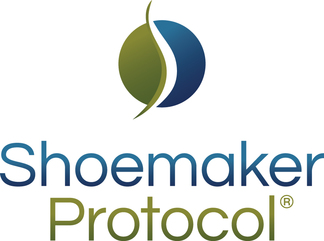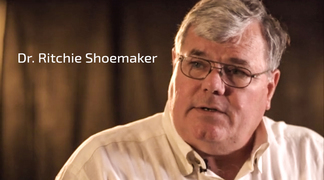Mold Resources
In the Courts and in the Office:
A possible court decision that would have included testimony on the NY report was going to be Holland in Brooklyn NY. A Frye challenge to Dr. Shoemaker’s testimony was mounted but was not accepted by the trial judge. No formal opinion was written, however. As Dr. Shoemaker prepared to testify, the case was settled.
One of Dr. Shoemaker’s patients, sickened by exposure to the Federal Building adjacent to the 9/11 site in New York City, has filed a Federal OWCP case seeking compensation for his lost time and personal injuries. His complaint is modeled on the Haeffner decision from 2009 in which the FAA lost their attempt to deny benefits to a disabled Air Traffic Controller sickened by exposure to the Metro Airport Tower in Detroit. The Control Tower there is still moldy; efforts are ongoing to clean up the building. With its concrete walls guaranteeing condensation problems indoors and central elevator shaft that acts as a piston to drive up contaminated air, I fear flying into Metro, though I must do so on Valentine’s Day to appear in the Aiello case.
The Aiello case, brought by plaintiffs’ attorneys Vicki and Tim Corr, is marked by the rather miraculous improvement of young Diane Aiello. She had been suffering from profound developmental delay from birth, as she had been conceived and carried to term delivery in a home with massive water intrusion and growth of microbes indoors. Diane was noted by her attending neuropsychologist to be markedly improved for the first time in four years, at a time coinciding with use of cholestyramine as the only changed variable.
In the Office...
Another happy occasion occurred last week when a 7-year old boy, another with profound developmental impairment following his conception and Mother’s gestation in a moldy home, said his first word and began to walk within six weeks of starting CSM as well. That event was just one day before we heard from a patient from New Jersey who had Lyme disease some years ago that occurred while he was living in a heavily water-damaged home. He shortly thereafter developed a dense central visual loss, effectively rendering him blind. He sought care from the finest neuro-ophthalmologists in Philadelphia and Columbia Presbyterian to no avail. He was treated for his mold illness using the standard sequential therapy. Nothing helped his vision in the early sequences of treatment; he became saddened but never gave up hope. He began using vasoactive intestinal polypeptide (VIP) in mid-December 2010 as his ERMI was now normal after remediation and his nasal culture wasn’t scary. By early mid-January he noted his numbness and tingling in his extremities had cleared and his fatigue abated. On a phone call 1/17/11 he said he is now seeing colors. Gold is gold, the sun is bright. Reds became browns and then reds. Truly a magical phone call! He has long way to go but the benefits of VIP are clear. We are not saying that blindness is treated by VIP: this man is responding, however.
The formal paper reporting the IRB-approved clinical trial of VIP in those with profound chronic fatiguing illness should be ready for submission this month.
The genomics work continues; we hope to have exciting news soon on this long-awaited project.
Meanwhile, court cases in the Bahamas, Tortola and Barbados are developing. Moldy buildings in the Caribbean create the same kind of human health effects as they do in the US. I am concerned that the courts in these foreign countries don’t have the precedent that we have in the US. On the other hand, the use of defense-fabricated publications routinely seen in US court cases hasn’t gotten into the precedent-forming decisions either.
Featured Resources
Shoemaker Protocol™ Quick Start:
The 3 initial steps to determine if mold is affecting you One of the most common questions we hear is, “how do I know if I have mold illness?” Rest assured, if you’re asking this question, you’ve come to the right place.
Lyme Biomarkers Publication Now Available!
Illnesses characterized by chronic fatigue are often defined by symptoms and not by objective biomarkers that support both diagnosis and treatment. Without readily obtained biomarkers, clinical management can be compromised by lack of certainty. This uncert...
Progene DX- Pathway to Certainty Part 1
What you need to know about transcriptomics: Learning a new genomics language; learning new insights on disease
MRA Genomics November 25, 2016
ABSTRACT: Exposure to the microbial growth in Water Damaged Buildings (WDB) can result in a chronic, multi-symptom, multisystem illness, which can last years, termed Chronic Inflammatory Response Syndrome (CIRS). Symptoms of CIRS include but are not limited...
Indoor Environmental Professionals Panel of Surviving Mold CONSENSUS STATEMENT
Medically sound investigation and remediation of water-damaged Buildings in cases of CIRS-WDB Larry Schwartz CIEC, BSME, MBA, Greg Weatherman CMC, Michael Schrantz CIEC, CMI, BPI-BA/EP, Will Spates CIAQP, CIEC, Jeff Charlton, ACIEC, AACIEH, Keith Berndtson...
Related Resources
- CIRS House Hunting Guide
- Certified Practitioner Paula Vetter Presents: "Mold Illness: Surviving and Thriving - A Recovery Manual for Patients and Families Impacted by CIRS"
- 06172014 Structural Brain Abnormalities in Patients with Inflamatory Illness acquired Following Exposure to Water Damaged Buildings A Volumetric MRI Study Using Neuroquant
- 02272013 VIP Corrects CIRS Acquired Following Exposure to Water-Damaged Buildings
- 08152015 Transcriptomic Signatures in Whole Blood of Patients Who Acquire CIRS Following an Exposure to the Marine Toxin Ciguatoxin.
- FAQ Video #4: Exercises and Capillary Hypoperfusion
- 2013 Healthy Home Clinic
- 02. Seizures Head Injury
- 21. Exhibit: WDB There are toxins and inflammagens
- Dr. Mercola Interviews Dr. Shoemaker




.jpg)